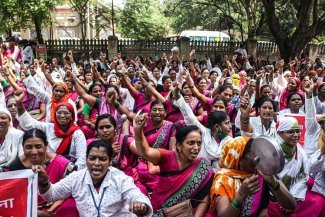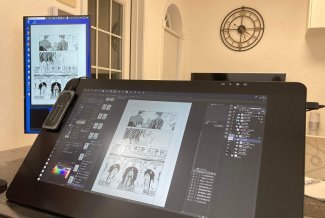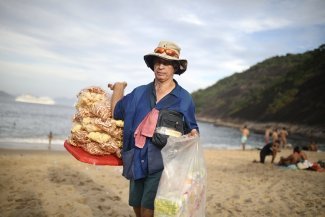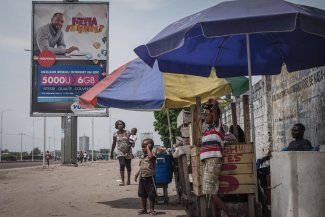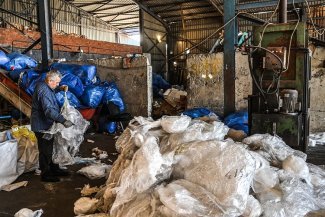Beginning on Monday, New York will host the 59th session of the Commission on the Status of Women (CSW59) at the headquarters of the United Nations, to evaluate the progress made in the 20 years since the Beijing Platform for Action was launched.
To prepare for this meeting, the indigenous women of the Americas met in Lima from 2 to 5 March to draw up a set of common demands. In their struggle for equality, much remains to be done.
In Canada alone, nearly 1200 indigenous women died or disappeared between 1980 and 2012.
In Colombia, the Consultancy for Human Rights and Displacement (Consultoría para los Derechos Humanos y el Desplazamiento - CODHES) estimates that over one million women have been forcibly displaced by armed conflict.
In Ecuador and Peru, some 38 per cent of women have suffered sexual or physical violence at the hands of their husbands.
In the light of such figures, the indigenous women from 23 countries on the American continent meeting in Lima reached a gloomy assessment of their situation.
“Indigenous women account for about 21 million people in the Americas. Whether we live in urban areas or in rural communities, from Canada to Peru, we have a common identity and common beliefs. We also have the same problems.”
“We are not accepted and we cannot exercise our rights fully. Discrimination, aggression, pollution, land grabs…we all suffer from the same forms of violence,” Tarcila Rivera Zea, president of the Continental Network for the Indigenous Women of the Amercicas (Enlace Continental de Mujeres Indigenas de las Americas – ECMIA), and the organiser of the event, tells Equal Times.
Lack of statistics on indigenous women
The UN’s Economic Commission for Latin America and the Caribbean (ECLAC) agrees.
A study published last May goes to the heart of the problem: the lack of statistical tools in most countries in the region.
That was one of the principal demands made at the meeting.
Most countries provide very little data on indigenous women. When it is available, however, the problem becomes obvious.
According to ECLAC figure, less than 15 per cent of indigenous women aged between 20 and 29 managed to obtain a university education in seven South American countries.
“When there are no statistics, it is much easier to pretend that there isn’t a problem,” a member of the public pointed out during the debates.
“Indigenous women are often abandoned, with no help from the state. They are marginalised by poverty and they watch helplessly as their ancestral lands are broken up”.
“The trade unions must take these issues on board, especially the question of gender. Indigenous women are the most badly affected by violence, and so it is important to train specialists in this subject within the trade unions,” explains Laerte Teixeira Da Costa, the Social Policy secretary for the Trade Union Confederation of the Americas (TUCA).
In the meantime, indigenous organisations have decided to take matters in hand.
The Canadian example is a perfect illustration. In the face of numerous disappearances, the Native Women’s Association of Canada (NWAC) carried out a survey that it then presented to the authorities.
A subsequent police investigation actually proved that even NWAC had underestimated the severity of the situation. Yet there was still no reaction from the state.
Dawn Harvard, the president of NWAC, explained the situation to Equal Times: “Do you know how Steven Harper, our Prime Minister, reacted to the disappearances? All he said was that this was not a priority and that more detailed studies were needed before any action could be taken.”
“In the meantime, nothing has changed. My ten-year-old daughter asked me one day: “I’m a young girl? I’m indigenous? So that means I’m at risk?” Sadly, I had to say yes. Between disappearances and forced prostitution, our population is being decimated…”
Despite the mounting difficulties, the young women interviewed remain optimistic, like Tania Pariona, a 29-year-old Quechua woman.
“Indigenous women have been fighting for our rights for 50 years. We have to carry on that fight. I was told that it is pointless to aim for utopia. For me it is my road map. I was told that we had to adapt to the system. I want to change the system.”



